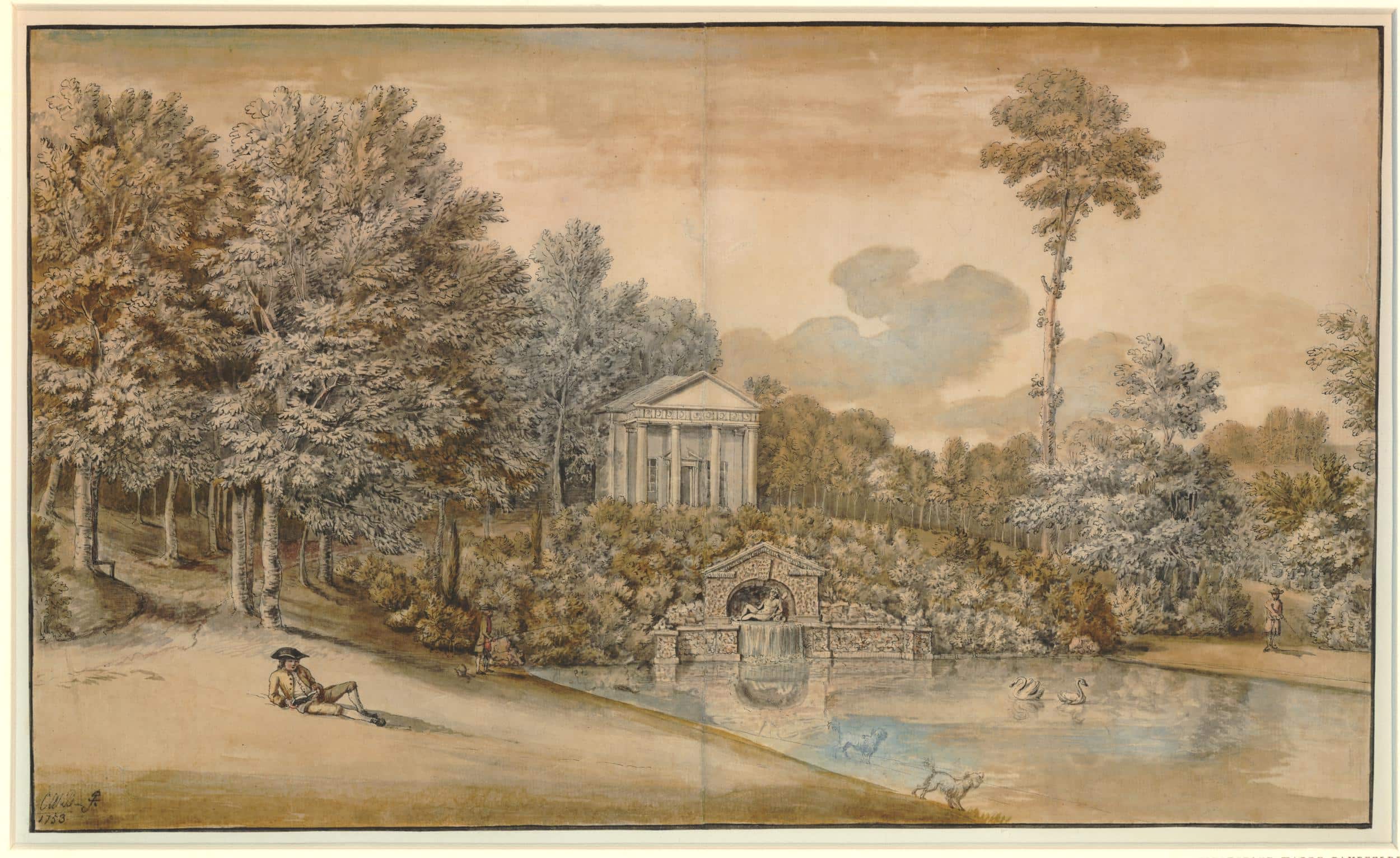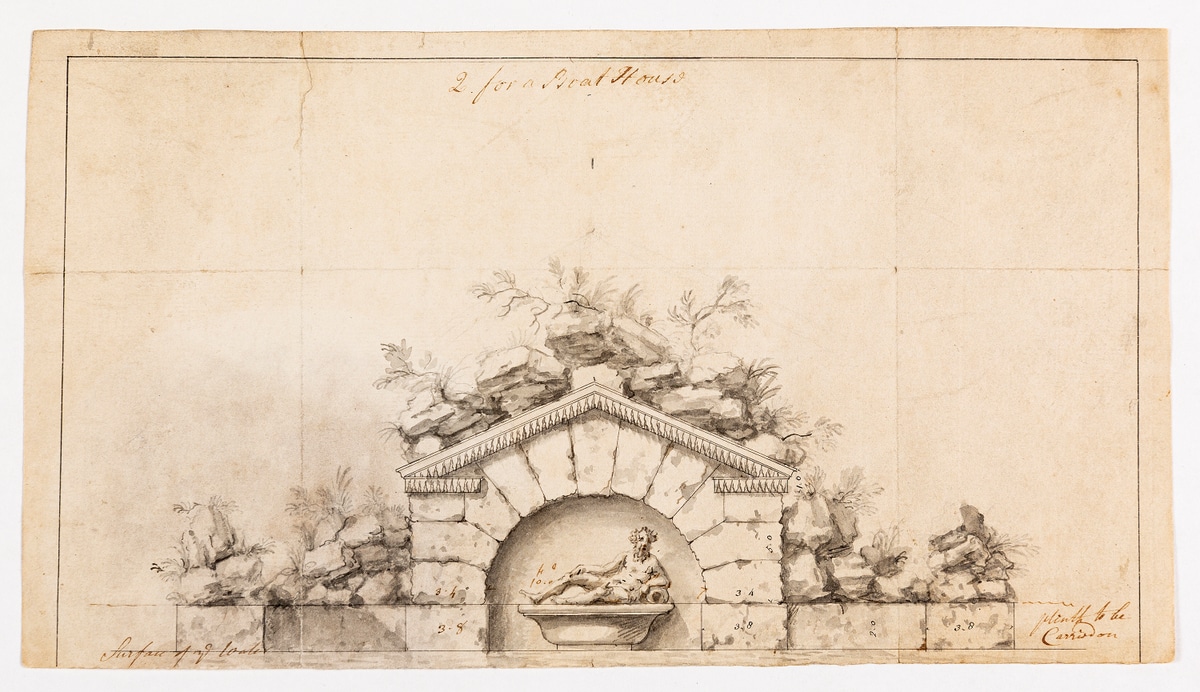The Temple of Flora, Stourhead: A Paradise Revisited
In 1744 Henry Hoare employed Henry Flitcroft to design a temple for his magnificent Palladian gardens at Stourhead: The Temple of Flora, which was built by William Privett in 1744–5. Excerpted below is an account of the temple’s history taken from Dudley Dodd’s book, Stourhead: Henry Hoare’s Paradise Revisited (2021). Purchase the book, here.

The temple presides over springs which provided water to the village. It was designed by Flitcroft, built by William Privett, 1744–5 and first dedicated, by Henry Hoare, to Ceres. [1] Flitcroft’s letters indicate the temple replaced an earlier structure. The Doric portico is limestone from the Chilmark quarry while the temple itself is greensand stone, rendered at the sides and exposed at the rear. The tiled roof was renewed in 1842 and the building restored in 1842 and the building restored in 1894. [2]
The story of the temple is complex to unravel. It housed the marble statue of Livia Augusta as Ceres, Roman goddess of agriculture or, in Greek mythology, Demeter, the mother of Persephone and instigator of the Eleusinian mysteries. After Henry moved her to the Pantheon, c.1760, he rededicated the temple to Flora, goddess of fertility and flowers. Above the entrance is inscribed Procul, o procul este profane (Begone, you who are uninitiated), resonating nicely with the Eleusinian mysteries, but this well-known quotation from Virgil is first documented at Stourhead in 1787. [3]
Hanway, 1756, described:
the temple of Ceres, which is on the side of the water nearest to the village… Eight or ten feet below, level with the water, in the subterraneous grotto, is another figure of the river god. [4]
A drawing attributed to Flitcroft depicted this rock-work archway sheltering a river god who reclines above a basin. [5]

Thomas Manning supplied the river god which was drowned when Henry completed the Garden Lake in 1756. [6] Flitcroft’s archway was later remodelled as a rock-work-cave. Happily, Bampfylde had already drawn the original ensemble, showing a cascade of water tumbling from the basin into the canal. [7] Flitcroft also designed the canal and its retaining dam which were both subsequently inundated. [8] The 1762 low-water plan shows the canal extending in a straight line about a third of the distance towards the present dam and its existence was confirmed in the underwater survey of 2004–5. [9]
Notes
- WSA, 383/907(1), Henry Flitcroft to HH, 25 August 1744, ‘My Next shall bring you… the Temple of Ceres with the Rocky Arch in which I propose to place the River God, & a Sketch how I conceive the head of ye lake’; Henry Flitcroft to HH, 7 September 1744, ‘I have inclosd to you the Plan & Elevation of ye Temple of Ceres with a Sketch of ye Entablature showing how the Tryglyphs & Metops should be proportioned with the Skuls &c introduced therein… I have also sent a plan & Section for the Manner of Laying the Foundations… a Section of ye inside of this Building shall be soon sent, with particular drawing of ye Doorcase & pedestal Mouldings’. Payments to William Privett which may relate to the Temple of Flora: HH Ledger 1734-49; 27 September 1745, ‘on accot of ye Temple’ £40; 3 November 1746, ‘in full of all Demands’ £28-8s-1d; 30 March 1747, ‘on accot of Buildg’ £30. C. Hoare & Co., HB/5/A/6, Partners’ Ledger 1742-51, HH account, 5 October 1745, ‘His Bill to Willm Privet (Mason)’ £40; 30 December 1745, ‘Willm Privet of Chillmark’s Bill’ £30.
- Stourhead Annals, vol. I, 1842, ‘the Temple of Flora new roofed and new leaded, and the entire Building repaired and painted’; vol. II, 1894-5.
- Gamba, 1824 (Rezzonico 1787), p.22. Virgil, Aeneid, bk VI, line 258.
- Hanway 1756, p. 92.
- McKewan 2006, pp. 94-104.
- HH Ledger 1734-49, 28 January 1743/44, ‘Thos Manning for a River God &c’ £15-15s. Anonymous 1764 (Stourton Gardens 1749), p. 102, ‘For yonder silver god they sigh, they burn, | And pour their tears incessant thro’ his urn; | But cold as lead, and deaf when they complain, | Supine he lies, and they but weep in vain. | See from beneath him (tinctur’d by the sun | With colours radiant) sheets of water run’.
- The Temple of Flora, 1753, by C. W. Bampfylde (1720-91), pen and colour wash, 280 x 470 mm. BM (1970,0919.20).
- WSA, 383/907(1), Henry Flitcroft to HH, 25 August 1744, ‘My Next shall bring … a Sketch how I conceive the head of ye lake should be formd twill make a most Agreeable Scene’.
- McKewan 2006, p. 34.
